What might we learn about the Sun if we could fly a spacecraft close enough to dip down and skim through its atmosphere? Thanks to the Parker Solar Probe, we don’t have to speculate!
The Parker Solar Probe (PSP) is a telescope designed to orbit the Sun at least 24 times, dipping closer and closer to our star’s surface over its mission lifetime. Its first few orbits have already been completed at a distance of about 35.7 solar radii from the Sun’s center. Just this past month, PSP used the gravitational pull of Venus to drop its orbit to 27.8 solar radii — and by 2024, after several such maneuvers, PSP will be flying just 8.86 solar radii (that’s less than 4 million miles) from the Sun’s surface, soaring through the Sun’s tenuous outer atmosphere.
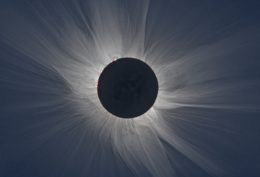
A view of the solar corona during the 2015 total solar eclipse in Svalbard, Norway. [S. Habbal, M. Druckmüller and P. Aniol]
Though PSP’s orbit still has a lot further to drop, it’s already flying closer to the Sun than any other spacecraft ever has! This means we’ve already been able to do some remarkable science in the year and a half since its mission began. A new special issue of the Astrophysical Journal Supplement Series now presents roughly 50 studies detailing the findings from PSP’s first two orbits around the Sun.
A few broad categories of topics explored among these articles are:
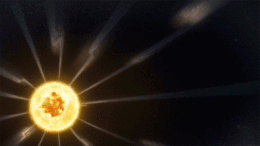
Illustration of magnetic switchbacks in the solar wind, first discovered by Parker Solar Probe. Click to view an animation. [NASA’s Goddard Space Flight Center/Conceptual Image Lab/Adriana Manrique Gutierrez]
Switchbacks
On large scales, the solar wind looks like a smooth flow of particles streaming radially outward from the Sun. But on scales close to the Sun’s surface, this flow is much more complex. PSP has measured a phenomenon termed “switchbacks” — rapid reversals in the direction of the magnetic field that governs the solar wind flow. Several articles detail what PSP has revealed about this phenomenon.
-
Plasma physics
The high time and frequency resolutions of PSP’s instruments allow the probe to capture unprecedented observations of different plasma phenomena in the ionized gas close in around the Sun. PSP’s first two orbits have produced data on various wave modes, electron holes, magnetic reconnection, radio bursts, microinstabilities, plasma turbulence, and more. Several articles in this issue are devoted to analysis of these detections.
-
Small energetic-particle events
Some solar activity can rapidly accelerate particles to enormous speeds. Since such energetic-particle events can pose a serious hazard to spacecraft and astronauts, we want to better understand what triggers them and how the particles are accelerated. PSP detected a large number of small energetic-particle events associated with various phenomena — and several articles in this issue detail what we’ve learned from these observations.
-
Plasma structures
When plasma is ejected from the Sun, it erupts into space in a variety of structures. PSP carries a camera system that has imaged the complex features of smaller plasma structures; in this special issue, these observations are analyzed and even combined with data from other Sun-watching spacecraft to build three-dimensional views of the structures. From this, we can better understand how magnetic fields govern the geometry and motions of the ionized gas emitted from the Sun.
-
Dust-free zone
Though dust pervades our solar system, theory predicts that close to the Sun, the high temperatures should prevent dust from existing. Several articles describe PSP’s observations that suggest thinning dust levels; data from PSP’s future travels even closer to the Sun will hopefully confirm the presence of a dust-free zone and determine where, exactly, it lies.
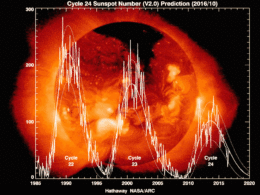
We’re likely at a solar minimum right now in between two activity cycles, as shown here in the predictions made from sunspot observations over the last several cycles. The Sun should become progressively more active over the course of PSP’s mission lifetime. Click to enlarge. [David Hathaway, NASA, Marshall Space Flight Center]
Citation
Special ApJS Issue on Parker Solar Probe
“Introduction,” Marcia Neugebauer 2020 ApJS 246 19. doi:10.3847/1538-4365/ab67cf
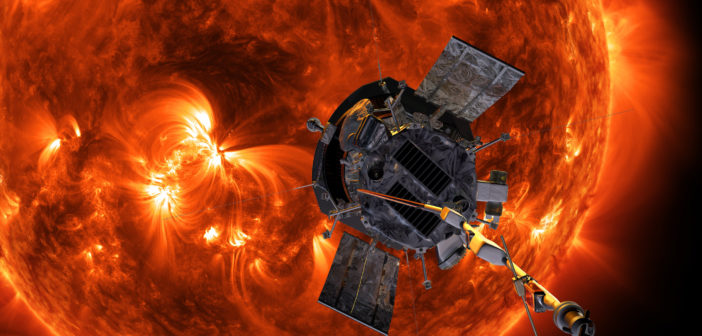
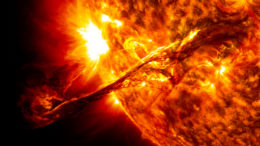
3 Comments
Pingback: Early Results from Parker Solar Probe - Smart City
Pingback: From AAS NOVA: “Early Results from Parker Solar Probe” | sciencesprings
Pingback: Der Solar Orbiter von ESA & NASA vor dem Start | Skyweek Zwei Punkt Null